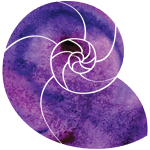Using the Neutrals Sets
What are wardrobe neutrals?
Harmonious neutrals are among the most challenging colour to choose because they contain relatively little pigment, and more difficult if the colour is quite light or dark. They include the colours that don’t register as actual colours. They are the background for our colours and include our white, beige, gray, khaki, taupe, or blacks, depending on our Season.
In this context, neutral does not refer to neutral colour warmth.
Depending on the Season, brown, navy blue, dark turquoise, and even forest green may be so natural with the appearance and so fundamental to the wardrobe that they have been included.
With your neutral colours selected for you, creating your sophisticated, weekend, professional, and evening combinations will be easier than ever before.
What You Receive
The set includes 12 pieces of fabric measuring approximately 9x4 inches = 23x10 cm. The 12 colours span the Season’s darkness (value) range, include a version of white and black, and demonstrate the warm to cool range in various shades and value levels. Specific colours in each set vary with each production run.
At least one example of brown or navy are included, as well as a more pigmented colour that is typical for the Season, such as mustard, turquoise, or blue, depending on the Season. Other examples of these may be Dark Winter red rust, True Winter red, Light Summer medium blue, or Light Spring khaki. These may act as neutrals and illustrate the relationship between a Season’s colours and neutral tones.
How to Use
Lay out the fabrics on a surface that doesn’t have much colour, probably a light neutral gray. Work by a window with overcast daylight. With your ink and canvas Season palette, look for the fabric colours. Notice how a colour in ink looks in fabrics of various textiles. Don’t be concerned if they are not an exact match, you have hundreds of good neutrals.
Make outfits by placing the fabrics on garments and consider whether the combinations are agreeable, with the neutrals acting as an enhancing background.
Try creating monochromatic neutrals-only combinations to see how the colours might act in a head-to-toe presentation.
If your Set included colours from the colour (rather than neutral) strips in the palette, perhaps a yellow, green, blue, or red, notice how belonging the colour is with the neutrals. It might belong so easily that it could even act as a neutral itself, in an eyeshadow or a natural lip colour, for example.
Take your neutral fabrics shopping to compare colours under the same lighting conditions. Some clients prefer the pieces to remain separate. Others have sewn them together in a diagonal along the top corner or keep them together with a paper clip or small clamp.
As for which neutral colours might suit you best, for the most part, the answer depends on personal preference. The extremes of light-dark and warm-cool in the Season (or the neutral fabrics) may require more planning in outfits, but so much depends on the design, textile, and the other colours in a composition that I would not consider any neutral as better than any other. The Neutrals Sets are assembled with a wide audience in mind and by definition, neutral means ‘goes with everything’, understanding that no colour goes with every person equally even within the same Season.
More applications
Value range. The span from lightest to darkest applies to every colour you add, from apparel to highlights in hair to your eyeshadow design. How near and far are the lightest and darkest colours from pure black and white? Try describing your white and black in your own words, which may be helpful for you and store staff when shopping. How you combine your lights and darks is your choice. Some days, wear your lightest and darkest for a crisp or formal look. Other days, combine your midtones and bring in more colour.
Combinations. Use the neutrals with coloured items when shopping to help judge whether the combination will be attractive.
Basics. Neutrals are excellent for suiting and items that require the versatility to be worn with any of your colours, for example, coats and footwear. They provide the backdrop and stillness to feature the livelier colours.
Undertone. The shared colour that unites a Season’s palette may be easier to see when overall pigment is reduced. You may notice smoky lavender in Soft Summer and peachy yellow in True Spring. Notice also the amount of colour pigment in the neutral tones. Is the colour easy to see, as in Summer’s mauves, or does the colour appear mostly gray and steely, as is the case for Winter neutrals?
Eye makeup. Use the fabrics to decide whether eye makeup will be compatible, in colours that could easily fit into the set. Keep eyeliner in mind for the darker colours, as well as eyeglass frames.
Hair colour. Among the fabrics, you may find a colour very near your natural base hair colour or an idea for a beautiful highlight. Even without an exact match, your colourist may gain a sense of which colours to choose in highlights or other colour additions to be harmonious next to your neutral tones, which include both those you add in clothing and cosmetics, as well as skin tone.
Shine. The textile variety illustrates how the colours look in matte, woven, or smooth surfaces, as well as a range for the type of shine that is most flattering. The back of many fabrics is a softened version of the colour belonging in the same Season or a closely related one, close enough to wear well. Shiny fabrics may more difficult to match in everyday textiles, whereas the more matte texture is easier to compare and shop with.The fabrics may also be applied in colour and shine to jewelry and metals, including sunglass frames, belt buckles, and hair accessories.

